Description
Building a Solo DIY Classical guitar kit can be a rewarding experience. You’ll not only create a custom guitar but also gain valuable skills throughout the process which can be applied to other guitars. Since all the challenging parts such as drilling, shaping, fret leveling and dressing are already taken care of, you’ll just need some basic woodworking skills and tools along with finishing supplies to complete it.
Disclaimer:
The successful construction and assembly of acoustic instruments rely on a complex set of mathematical and physical equations, as well as the inherent variables associated with wood products. Adherence to these equations is critical to the instrument being playable within the parameters of tuning and intonation. We have taken every precaution in order to make our acoustic kits as easy to assemble as possible.
Therefore we will not take responsibility if the variables associated with acoustic instruments, or the lack of skill and/or accuracy on the part of the assembler contribute to the instrument not meeting the customers expectations.
Manuals: Assembly
Finishing Options: Nitro, Stain, Oil, Dyes, etc
Kit includes:
- Fully assembled body
- Spruce top with Agathis back and sides
- Nayto neck with Black Walnut fingerboard
- Machine heads
- Chrome hardware
- Classical sized body (Overall Length 41″)
- Width at Nut: 51.175mm
- Width at 12th fret: 60.90mm
- Overall Length 38.5″
- Upper Bout: 11.25″
- Lower Bout: 14.50
- Body Thickness: 4″
- Scale length 25.6″
- Fretted (19 frets)
- Pre-shaped bridge
- Bridge pins
- Strings
- Rosette decal
: Solo ACK-10 DIY Classical Guitar Kit
: ACK-10
Disclaimer: Kits can only be returned in virtually untouched condition and in original packaging









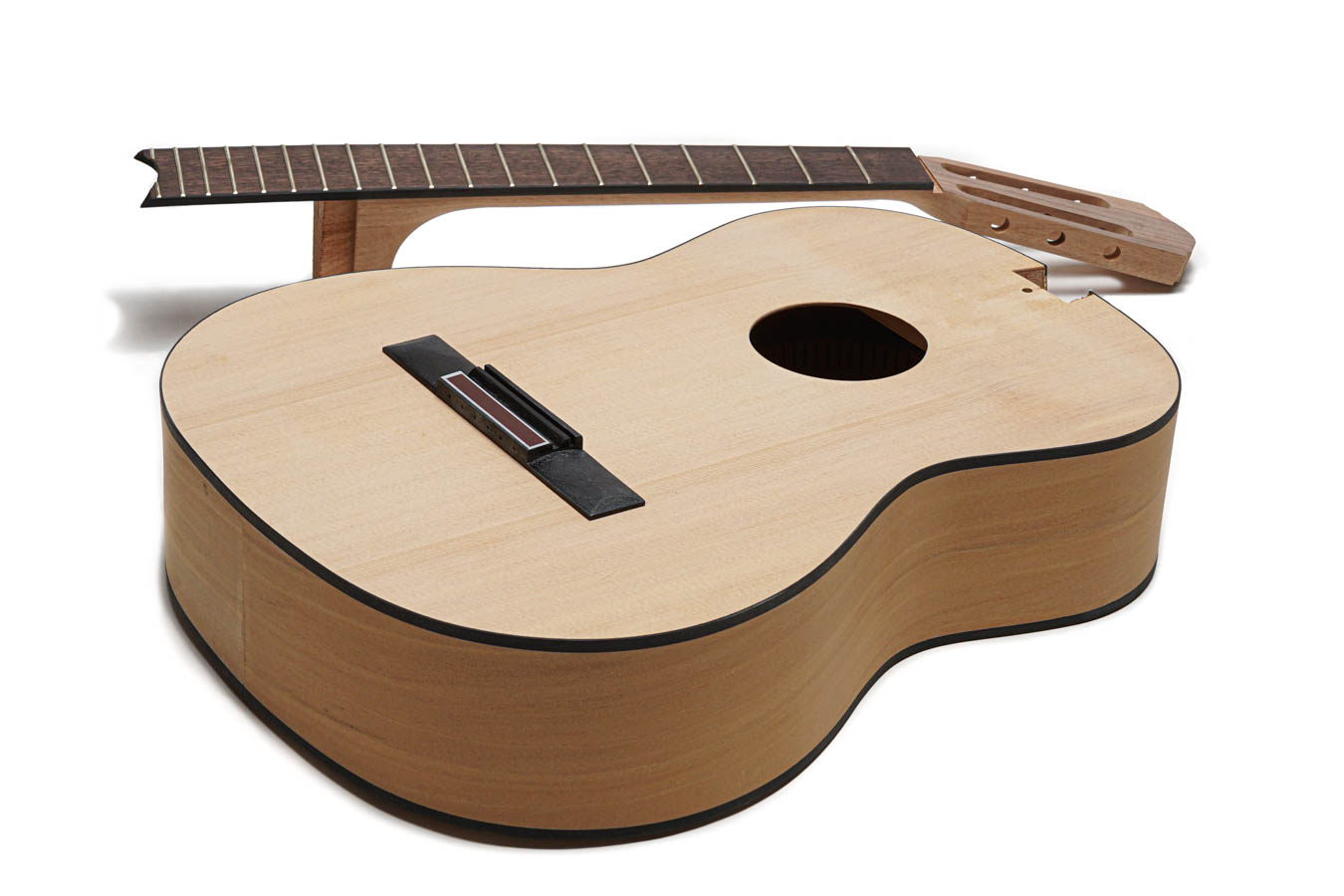

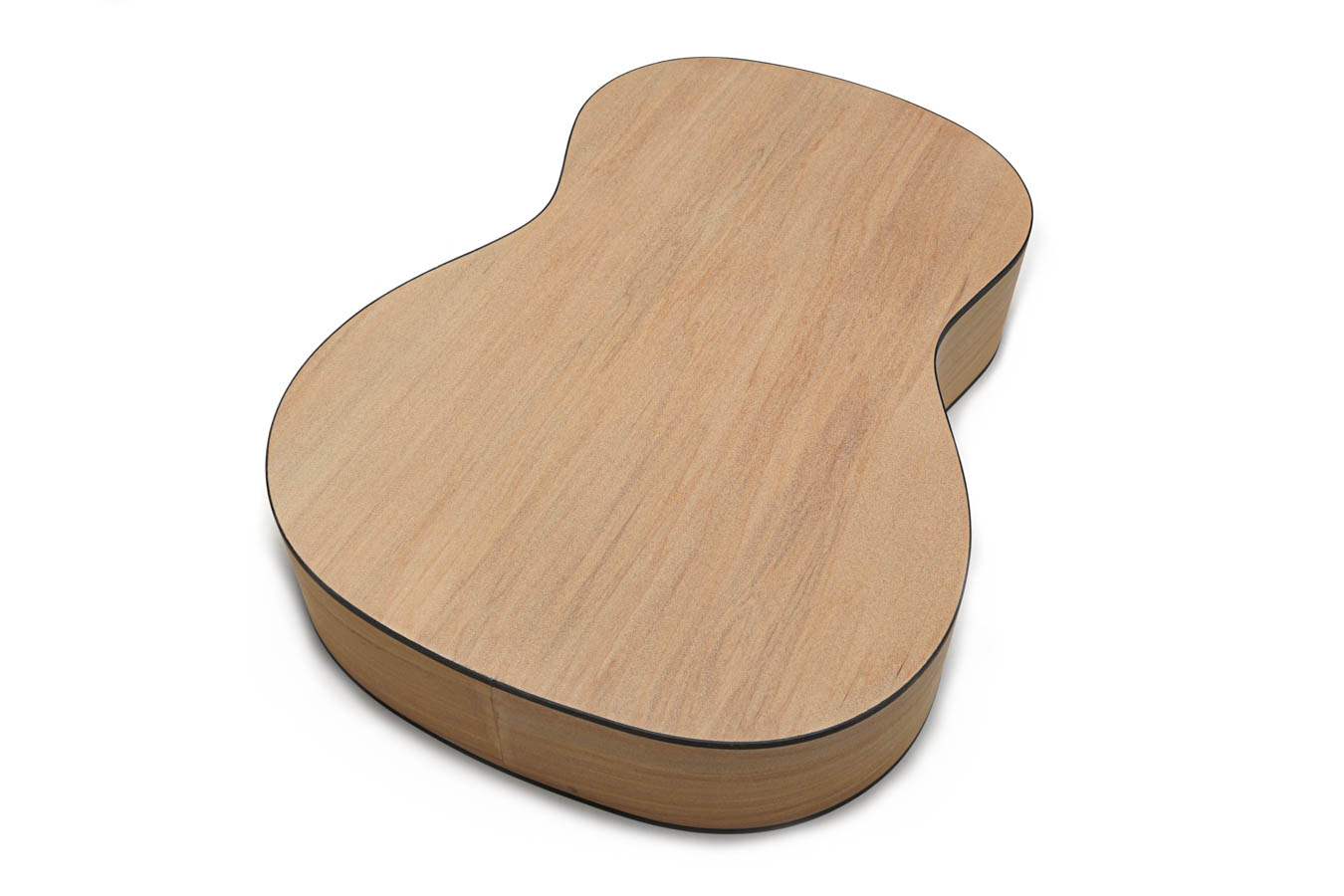
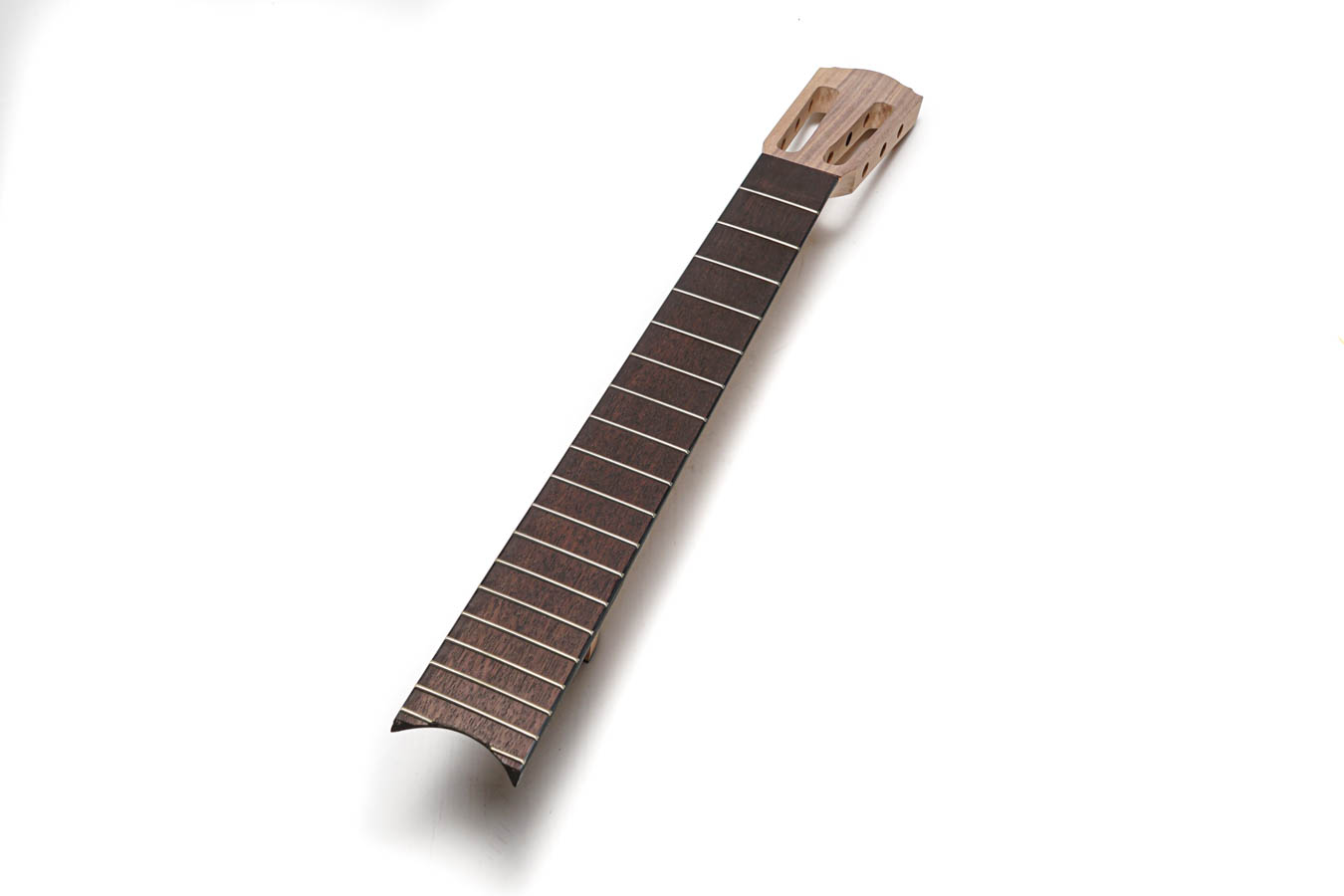
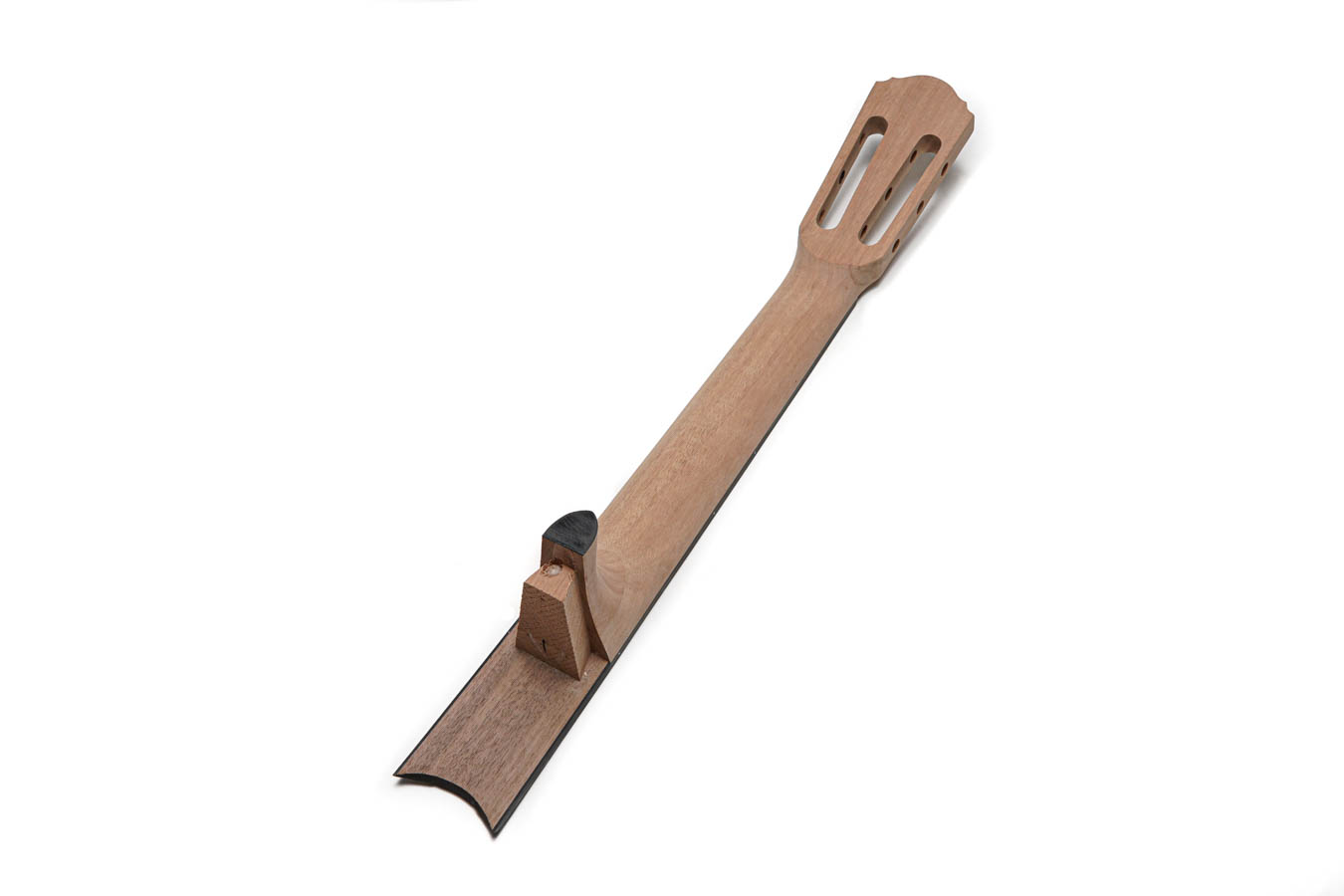
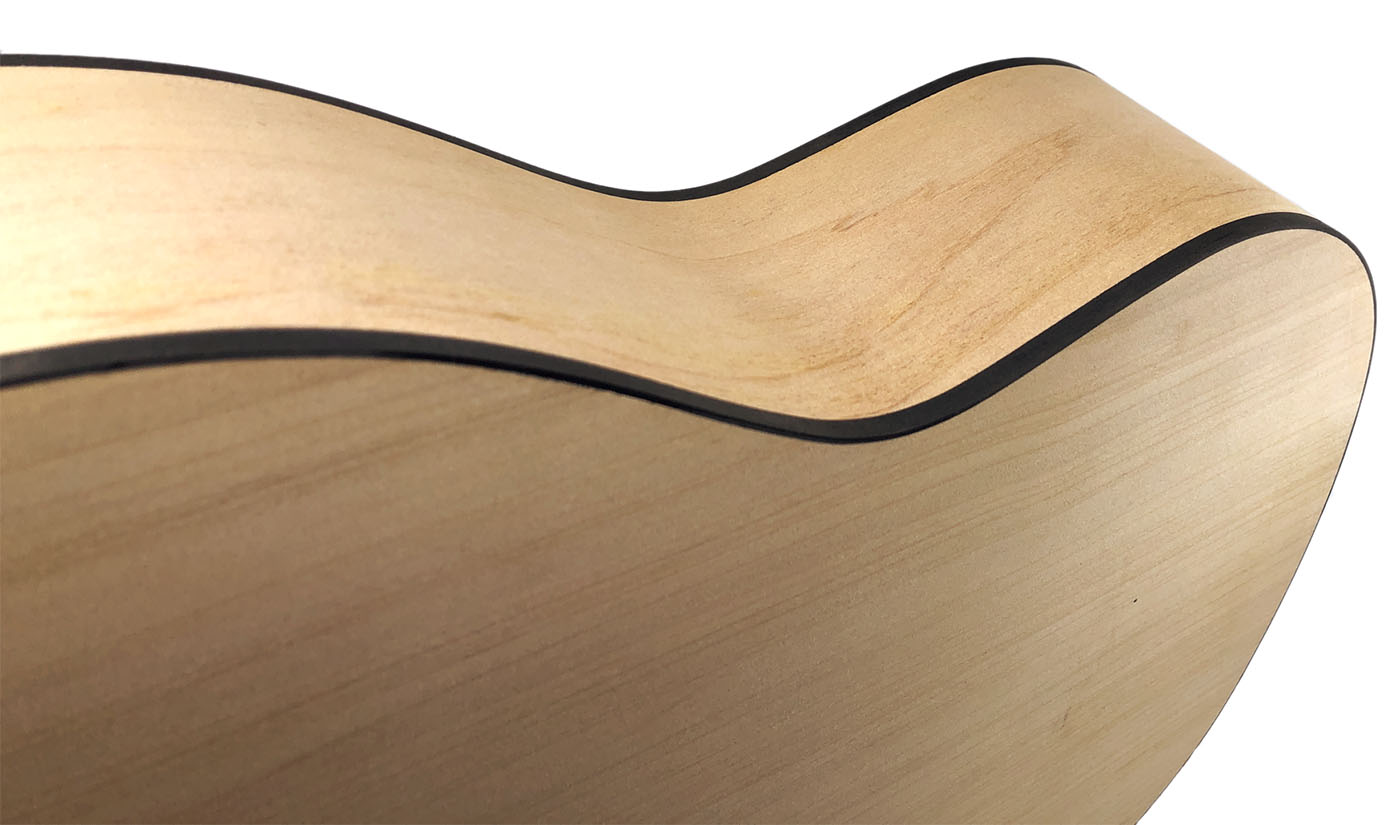
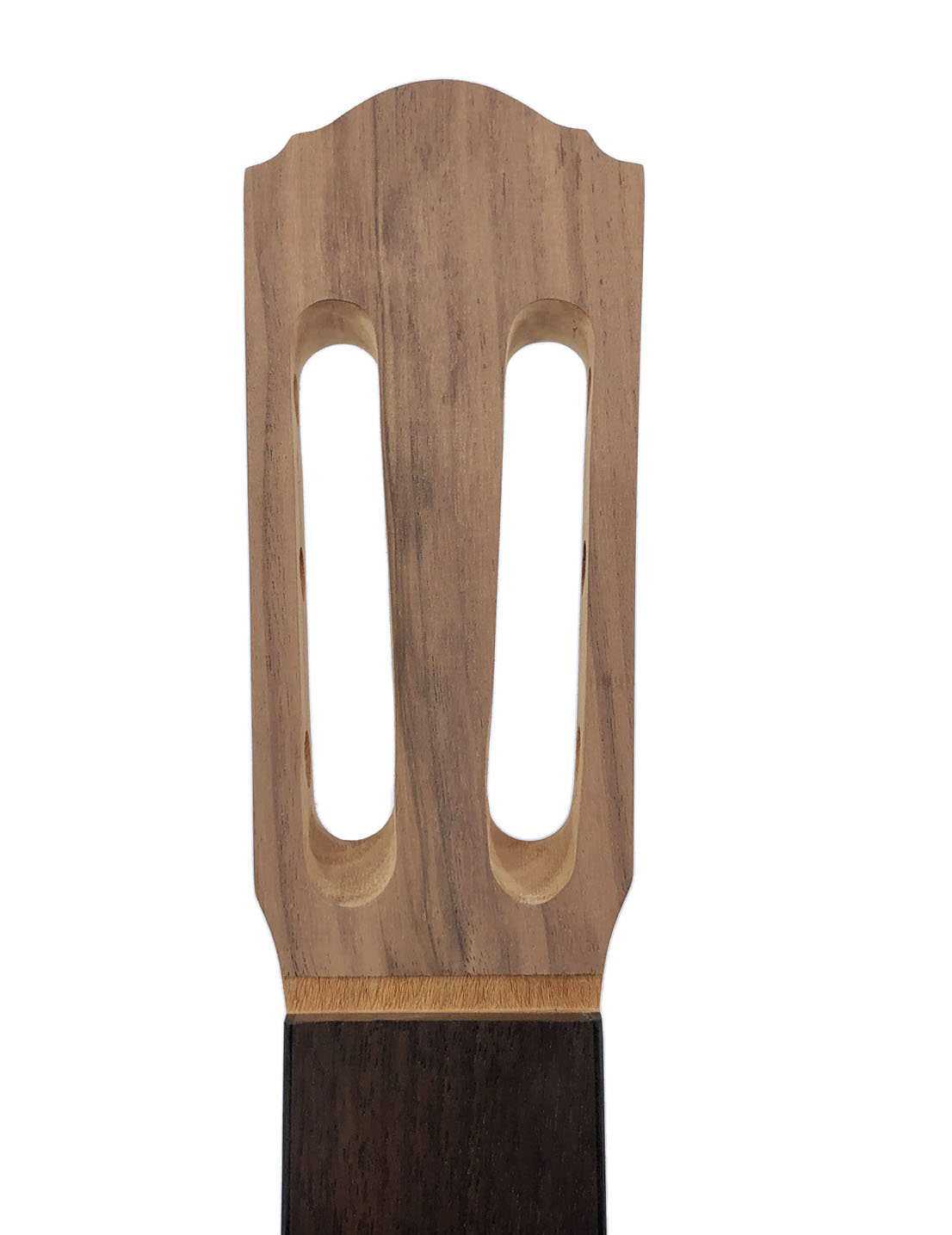

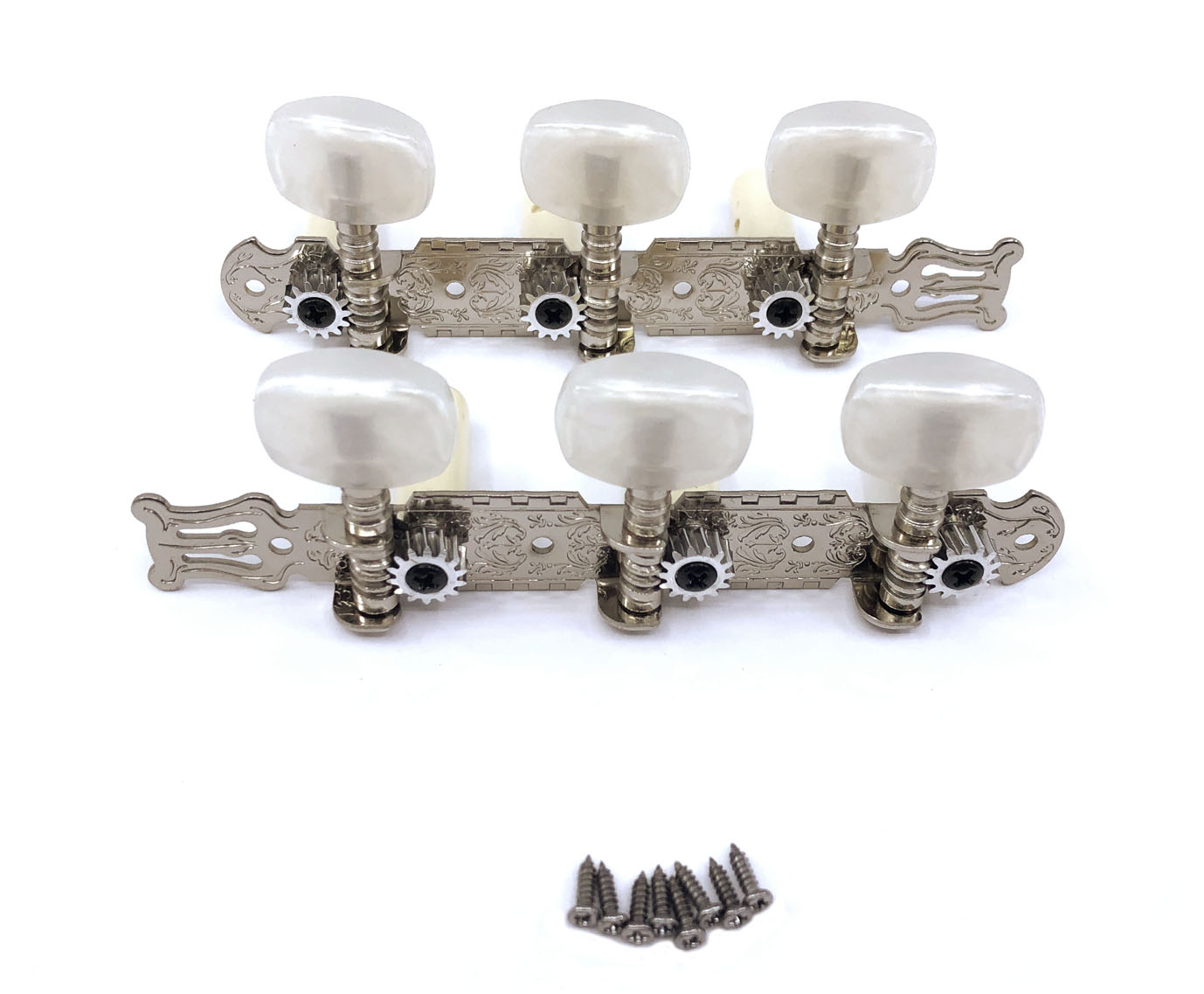

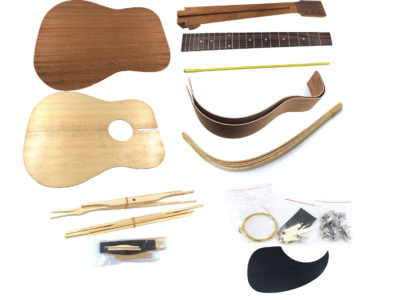
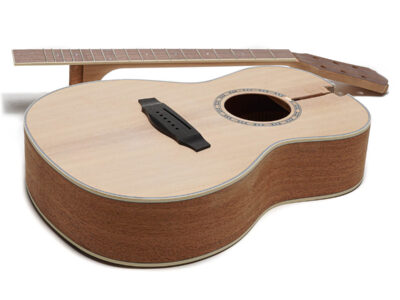
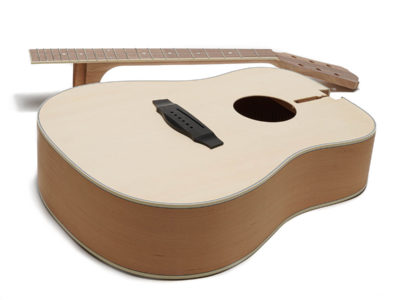


drtank (verified buyer) –
The Solo ACK-10 DIY Classical Guitar was not only the first classical guitar I’ve assembled but also the only nylon-string guitar I have ever played. I was intrigued by the idea of something other than steel strings and with the skillful methods by which nylon strings must be installed. So I invested in the ACK-10 kit. I was surprised but not daunted by the overall short length of the ACK-10, which, I have discovered is more usual than not with classical guitars. All the parts for the kit were present and accounted for, but there was a problem. The bridge was significantly warped. Fortunately Solo Music Gear’s customer services representative, Padraig, was exceptionally and efficiently helpful. Within a few days I received a replacement bridge. I sanded everything (except the bridge and the fret board) moderately with 220 and 400 grade paper, and proceeded to glue in the neck, a procedure that went without a hitch, The fit was close to perfect, and no significant adjustment was necessary. The scarier operation was gluing on the bridge, which has to be placed so that the saddle is exactly 25.6 inches from the front of the nut. But the masking-tape template that the Solo kit makers use to mark the correct distance was very accurate. As suggested in the assembly manual, I filed and dressed the frets, all of which seemed to have been skillfully and accurately set into the fretboard.
I finished the all of the wood (except the bridge and the fretboard) by applying at least a dozen coats of Tru Oil, and I rubbed off the nibs after every other coat with 3M finishing cloths. The birch top took well to Tru Oil, and the final, waxed finish looks semi-glossy and nearly flawless. However, the Agathis sides and back are not friendly to Tru Oil. Agathis has an insatiable thirst, and it was difficult to make them look as finished as the birch top. With much patience and two extra coats of Tru Oil, followed by a light 3M cloth rub, I finally succeeded in producing an acceptable satin finish on the sides and back.
After installing after-market custom black tuners, a stick-on rosette decal, and black strap buttons, I was ready learn how to install nylon strings. Learning how to “braid” the nylon strings was a bonus, and I found that mastering that skill takes some time but is personally rewarding. By following a couple of online videos that I Googled, I successfully strung my new classical guitar in about two and a half hours. The second “stringing” was about an hour faster. When I could not perfect intonation, particularly on the bass strings, I bought some premium name-brand strings and a slightly (.15 mm) wider after-market saddle. Intonation problem solved! I did find that, as classical owners will tell you, nylon strings take at least a week or two become stably tuned.
The guitar is beautiful, and its deep tones are as charming as its appearance. This kit was a great, enjoyable investment. It took me a total of about 8 days to build the guitar and another week or so to fine-tune a few things, as noted earlier. I love this piece, and I have been playing it more often than any of my other lutes.
Monkey Guitars –
This is a great kit for anybody that wants to say they built a classical guitar. I am sure the build level 4 is a mistake because the guitar is pretty much done: all you need to do is sand, finish it to your preference, glue the bridge on (location is pre marked for you), install the neck(gluing is not the only option) and set it up (with the hardware and strings).
It does take a few days to a few weeks depending on your method of paint/stain and finishing and how many coats you decide to put on.
I have purchased two of these kits to test stains and finishing products on the body and oil options on the neck. Soundboard is good to practice French polishing on as well.
It is a good practice guitar if you want to go into repair:you could take the soundboard off and glue it back on. Maybe route it out for a real rosette, remove the neck if you’ve glued it on or even take of the fretboard and install a truss rod (which is more of a modern classical guitar thing).
This classical guitar sounds good for what it is and it’s price point. If you plan on keeping it around to play, I do suggest to invest in some better tuning machines, strings (mine lasted a couple of weeks – not even from playing) and upgrading the nut and saddle would help out in sound. *These are suggestions only and won’t miraculously make the guitar sound like a $2000+ classical guitar
It’s definitely not a comparison to building a guitar from scratch which is what I do.
If you are looking for something with better sound and a more real build experience, Solo does offer Martin kits.